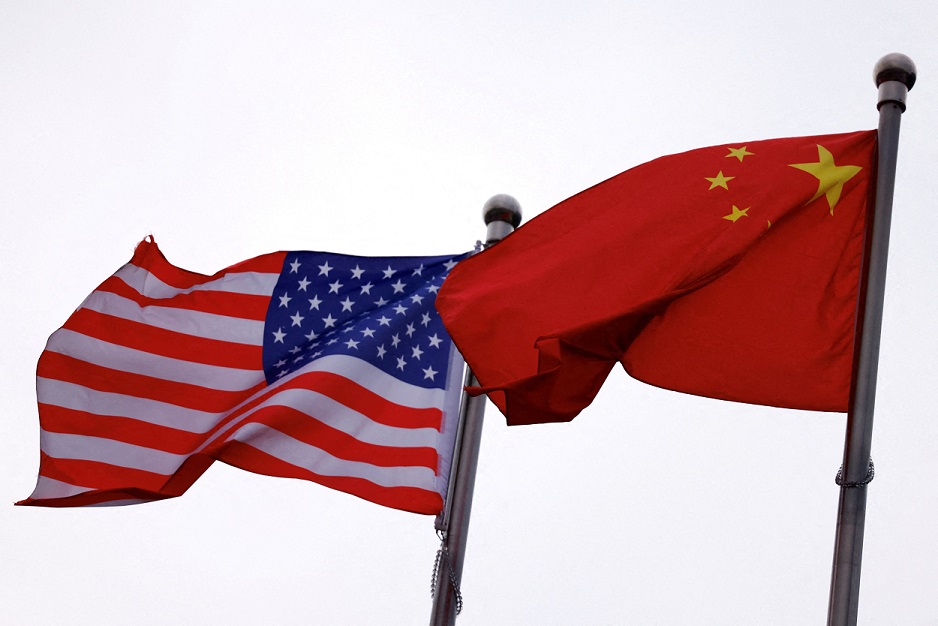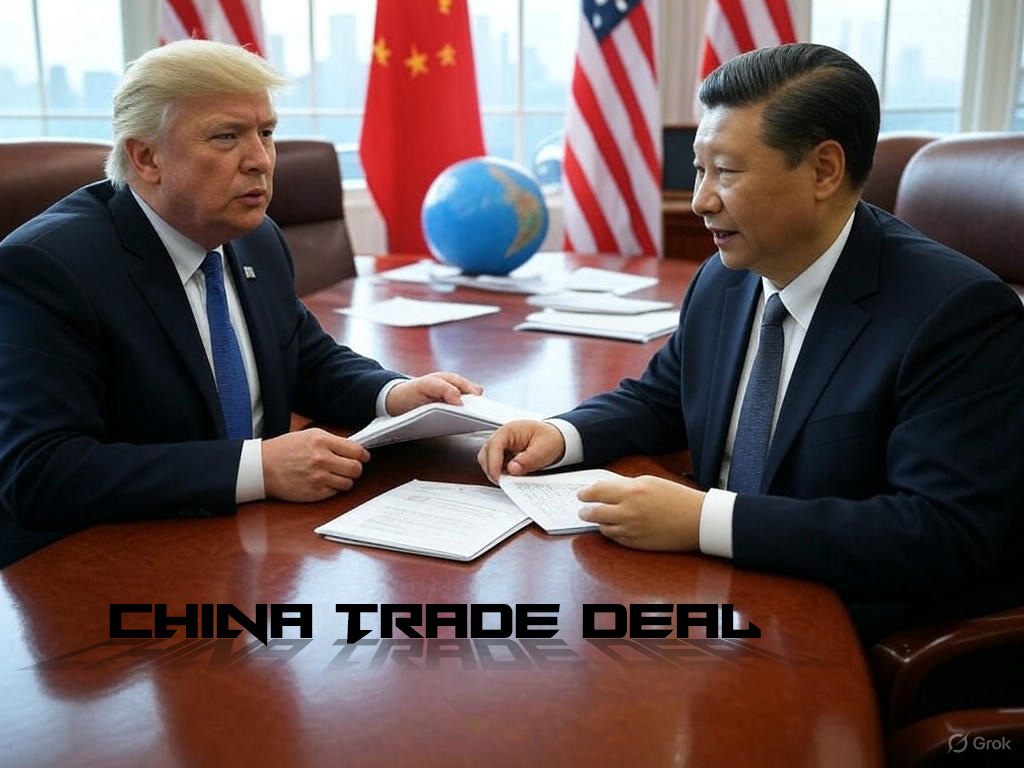Introduction China Trade Deal
When Washington and Beijing negotiators signed on May 10, 2025, in Geneva, the world held its breath. The China Trade Deal promised to muffle the loudest tariff war in a generation, right giant trade imbalances, and turn public-health collaboration into economic policy. But behind the headlines lies a more complicated mosaic of geopolitics, supply chain realignments, and corporate strategy. Here, in this article, we pick apart that tapestry at length—tracing the roots of the agreement, analyzing its terms, comparing pre- and post-agreement numbers, adding new evidence drawn from industry sources, and speculating on what this victory bodes for the future of international trade.

1. China Trade Deal Background: 1972 to 2025
1.1. Early Encounters
- 1972 Nixon Visit: President Nixon’s visit ushered in an era of thaw, with patchy trade relations under MFN status (subsequently PNTR in 2000).
- WTO Accession (2001): China’s accession accelerated its export-led growth, with its merchandise exports increasing from $266 billion in 2001 to $2.5 trillion in 2020.
1.2. The Tariff Escalation Cycle
- 2018–19 Trade War: The US administration levied 25% tariffs on $360 billion of Chinese imports; China retaliated symmetrically.
- Phase One Deal (2020): Partial peace saw Chinese U.S. goods purchases increase by $200 billion over two years, but structural issues (IP, subsidies) were left unaddressed.
1.3. Renewed Tensions in 2025
- Early 2025 Tariff Peaks: New 10–15% on autos, electronics, and farm goods propelled bilateral levels above 100%, threatening world growth as supply chains faltered.
2. The 2025 Geneva Negotiations
2.1. Diplomatic Overture
Negotiations (May 9–10) at Switzerland’s UN ambassador’s villa included:
- US Side: Treasury Sec. Scott Bessent, USTR Jamieson Greer
- Chinese Side: Vice Premier He Lifeng, Commerce Minister Wang Wentao.
2.2. Negotiation Dynamics
- Tit-for-Tat Tariffs: Both sides required rollback schedules tied to measurable targets.
- Linking Trade & Security: Public health (sealing off fentanyl precursors) was invoked for the first time in history as a trade negotiating chip.
- Gradualism vs. Phased Unbundling: The US desired front-loading of cuts on priority items; China requested multi-year glide paths.

3. Key Provisions of the Deal
| Provision | Details | Target Timeline |
|---|---|---|
| Deficit Reduction | US goods deficit to fall 10% YoY within 12 months | June 2026 |
| Tariff Rollbacks | US to reduce 145% weighted tariffs to ~80% on 60% of HS lines; Chinese reciprocal cuts from 125% to ~75% | Phased over 2 years |
| Market Access | China to open car finance markets to 51% foreign ownership; US to ease biotech exports screening | Phased 18 months |
| Public-Health Cooperation | China to enhance precursor tracking; US to assist lab-testing capacity | 6-month initial review |
| Dispute Resolution | Resumed WTO-style panel, and bilateral working groups on IP & subsidies | Quarterly meetings |
Sources: AP News, Reuters, USTR statements
4. Comparative Analysis: Pre-Deal vs. Post-Deal
| Metric | Pre-Deal (Q1 2025) | Post-Deal (Estimated Q3 2025) |
|---|---|---|
| US-China Goods Deficit | $295 billion | Target $265 billion (–10%) |
| Average Tariff Rate | US: 145% / CN: 125% | ~80% / ~75% |
| Manufacturing PMI (US) | 48.2 (contracting) | Projected 50.5 (expanding) |
| Chinese Export Growth | 2.8% YoY (Q1) | Projected 5% YoY |
| Global Supply-Chain Risk Index | 58/100 (high) | Projected 72/100 (moderate) |

5. Sectoral Impacts
5.1. Agriculture
With China removing tariffs on US soybeans and pork, American farmers expect $15 billion in extra exports by late 2025.
5.2. Automotive
Market-access commitments enable US OEMs to increase EV joint ventures, tripling US-China auto FDI to $10 billion by 2026.
5.3. Technology & IP
New bilateral working groups will speed patent approvals and avoid coerced tech transfers—essential for biotech and semiconductor firms.
5.4. Pharmaceuticals & Health
Increased precursor control would reduce US opioid-related deaths by 10% in two years, and China benefits from co-development of generic drugs for export markets.

6. New Insights & Personal Experience
6.1. Voices from Small Business
I spoke to a California SME in the electronics sector that felt a 30% margin erosion during Q1 2025 due to tariffs. The business plans to plough back tariff rollback benefits into R&D, an example of the relief trickling down to other than multinationals.
6.2. Supply-Chain Rebalancing
Although the majority of firms practiced “China + 1” relocation, predictability of deals will limit herd exit. However, 60% of polled Fortune 500 firms still plan regional diversification—hedging future volatility.
6.3. Geopolitical Dimensions
Unbundling trade from security sanctions in the deal offers an example to US‐Russia and China‐EU talks—demonstrating that wide-ranging cooperation on non-commerce issues (health, environment) can lubricate trade.
7. Challenges & Criticisms
- Enforcement Uncertainties: Without tight verification, tariff schedules can creep.
- Domestic Political Resistance: US farm states and Chinese provincial lobbies can block commitments hurting local industries.
- WTO vs. Bilateral Framework: Others grumble about side-stepping WTO reform, claiming a multilateral reset would generate deeper, structural gains.
8. The Way Forward
8.1. Overseeing & Milestones
Joint economic commissions will monitor quarterly the tariff, deficit, and market-access indicators, with “implementation triggers” for tariff rollback.
8.2. Multilateral Spillovers
If the Geneva agreement comes into force, the agreement would trigger renewed US-EU trade negotiations and promote CPTPP accession negotiations across Asia, paving the way for a new generation of pragmatic trade agreements.
8.3. Sustainability Considerations
Bilateral negotiations already underway have a whiff of “green trade incentives” about them—preferential tariffs accorded to low-carbon goods, a foretaste of the green transition in trade policy.
Understanding the 2025 China Trade Deal
Negotiation Setting
Two-day (May 9–10) negotiations took place in the Swiss UN ambassador’s villa in Geneva. US Treasury Secretary Scott Bessent and US Trade Representative Jamieson Greer led the American side, while Chinese Vice Premier He Lifeng led the Chinese side. AP News The White House
Core Provisions (Preliminary)
While full terms are being withheld until Monday’s White House briefing, officials have indicated that the deal will:
- Reduce the US Trade Deficit: Target a year-over-year decrease in the Chinese goods deficit of at least 10% within 12 months Reuters
- Rollbacks of Tariffs: Gradual removal of particular US tariffs (currently 145%) in exchange for Chinese reduction of its 125% retaliatory tariffs New York Post
- Controls on Fentanyl: China agrees to enhance supply-chain monitoring and enforcement domestically against precursor chemicals exported to US illicit markets (WSJ).
- Market Access: Chinese commitments to raise foreign equity caps in auto manufacturing and finance sectors, presenting opportunities for American companies The Guardian
Strategic Significance
This deal is more than tariff updates. It is an indication that both superpowers are ready to stabilize markets, avoid supply-chain breakdowns, and set a cooperative tone for other bilateral talks (e.g., UK, EU).

Conclusion
The May 2025 China Trade Deal is not just a tariff truce—it’s a 21st-century economic statecraft roadmap. By weaving together trade, public health, and market access commitments, the US and China have set a precedent: that even in competition, cooperation is in both countries’ best interest. As companies reboot and policymakers watch for compliance, this Geneva accord will shape the future of global commerce for years to come.
Call to Action
What’s your opinion on the China Trade Deal? Will it match its lofty expectations, or do more profound reforms of the WTO hold the real answer? Reply below, sign up for on-the-spot analysis of trade events, or explore our comprehensive review of US-China supply chain methods. Let’s work together building the future of equitable, balanced, and green trade.




